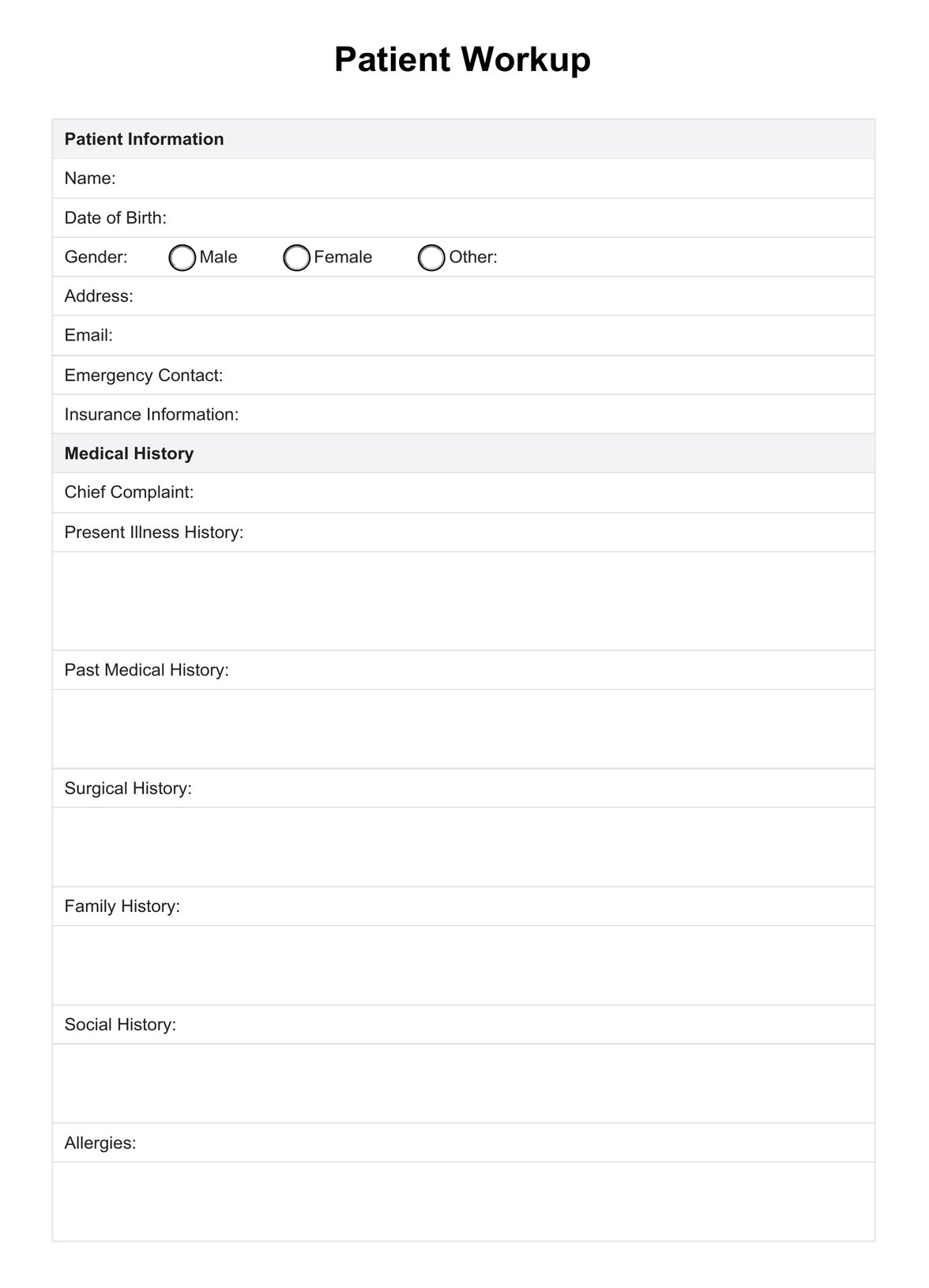Patient Workup Templates are essential for ensuring thorough and standardized assessments, improving documentation accuracy, facilitating communication among healthcare team members, and enhancing patient care quality.

Patient Workup Template
Optimize patient care with our comprehensive Patient Workup Template. Streamline assessments and treatment plans efficiently.
Patient Workup Template Template
Commonly asked questions
Begin by gathering patient information, including demographic details and medical history. Document findings from physical examinations and order any necessary diagnostic studies. Finally, analyze the collected data to define current medical problems and develop a personalized treatment plan.
Yes, many Patient Workflow Templates are customizable to suit healthcare practices' specific needs and preferences. You can adjust sections, add or remove fields, and tailor the template to align with your practice's workflow and documentation requirements.
EHR and practice management software
Get started for free
*No credit card required
Free
$0/usd
Unlimited clients
Telehealth
1GB of storage
Client portal text
Automated billing and online payments











